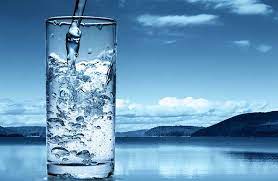Water quality refers to the chemical, physical, biological, and radiological characteristics of water. It is a measure of the condition of water relative to the requirements of one or more biotic species and or to any human need or purpose.
Water quality standards are numeric values or narrative descriptions of water quality parameters that are meant to sustain the designated uses of a water body. It is most frequently used by reference to a set of standards against which compliance, generally achieved through treatment of the water, can be assessed.
Water quality standards consist of two different elements namely designated use and water quality criteria. The most common standards used to assess water quality relate to health of ecosystems, safety of human contact, and drinking water. The parameters for water quality are determined by the intended use.
Water quality standards are part of regulations. There are several sets of water quality standards, or guidelines for water quality standards issued by various agencies and authorities (e.g. United States Environmental Protection Agency (EPA), World Health Organization (WHO), and European Union (EU).
Federal Environmental Protection Agency in 1988 (now under Federal Ministry of Environment) intended to define the maximum acceptable limit of water pollution by various pollutants.
Standards for ambient water quality (quality objectives) are designated depending on the intended use of the water resource (e.g. drinking water, fishing water, spawning grounds).
To establish water quality standards, it is important to identify and describe how surface waters are used and what water quality parameters should be managed.
Water Quality Standards
Categories of Water Uses
The parameters for water quality are determined by the intended use. The ‘designated uses’ of a water body are grouped into four categories:
- Agricultural and industrial water supply
- Recreation water
- Public water supply
- Aquatic life
Standards for Drinking Water Quality
Drinking water quality standards describes the quality parameters set for drinking water. In 2011, the World Health Organization (WHO) published guidelines for drinking-water quality (GDWQ) which include recommended limits on naturally occurring constituents that may have direct adverse health impact (WHO, 2011).

The International Organization for Standardization (ISO) published regulation of water quality in the section of ICS 13.060, ranging from water sampling, drinking water, industrial class water, sewage, and examination of water for chemical, physical or biological properties. ICS 91.140.60 covers the standards of water supply systems.
Read Also : Tools for Air, Water and Soil Analysis
Although drinking water standards frequently are referred to as if they are simple lists of parametric values, standard documents also specify the sampling location, sampling methods, sampling frequency, analytical methods, and laboratory accreditation Analytical Quality Control (AQC).
Water quality standards usually contain parametric values which may be the concentration of a substance that may cause adverse effects on health, e.g.30 mg/l of Iron. It may also be a count such as 500 E. coli per litre or a statistical value such as the average concentration of copper is 2 mg/L.
Parametric values may also include a range of constituents that by themselves are unlikely to have any impact on health. These include colour, turbidity, pH, and the organoleptic (aesthetic) parameters (taste and odour).
Drinking Water Quality Standard is important in water quality management and protection of public health. Standard for drinking water quality stipulates allowable limits of substances which may be present in the water that may adversely affect public health.
Read Also : Chemical Methods of Weed Control Guide

